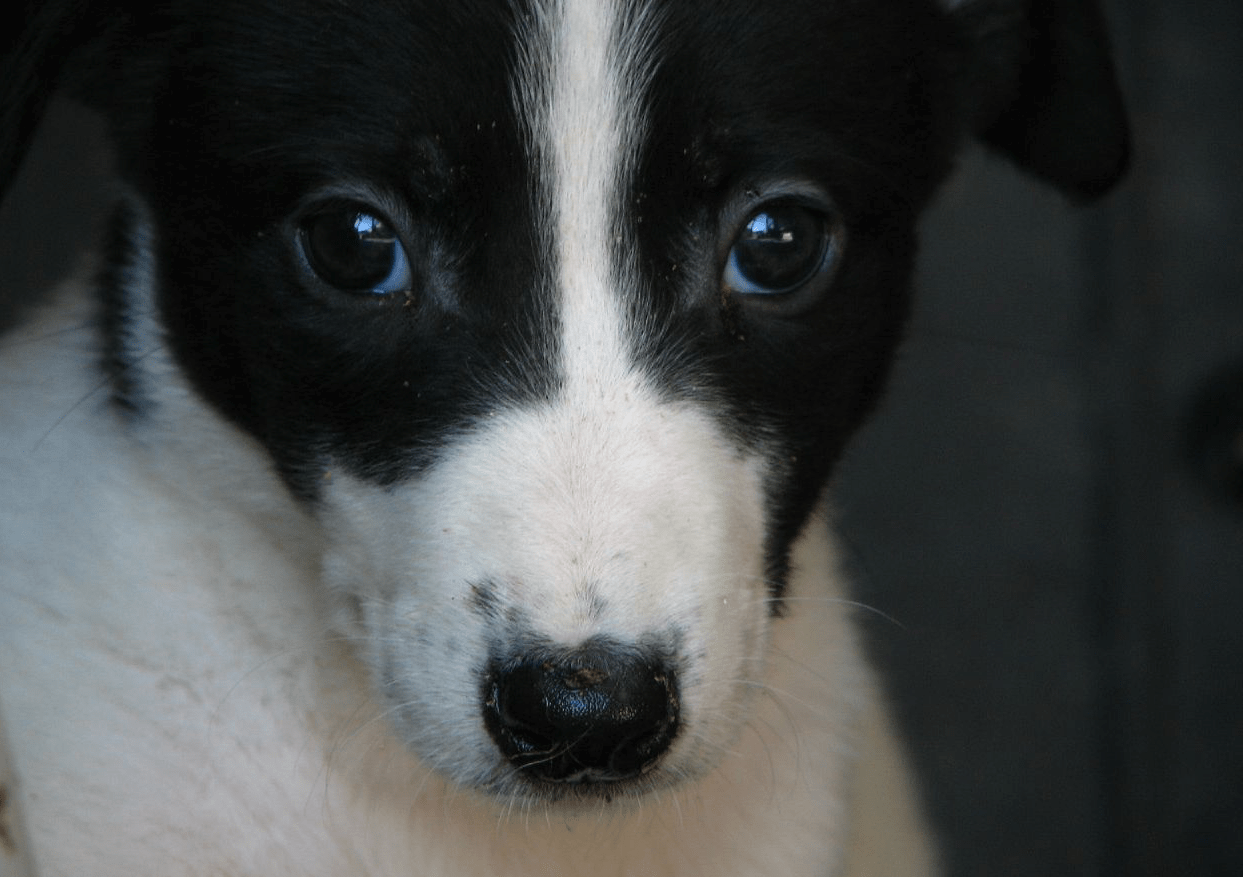My mother walked gingerly toward our detached garage to get something from the chest freezer. Although the driveway was plowed, snow drifted across it like dollops of meringue on warm pie and it was covered with a wet sheen of ice. Mom slipped and fell and could not get up again. There was nothing to pull herself up with, and the car and garage were too far away for her to crawl there for safety.
Feister, my brother’s dog, had trailed behind her. He barked furiously, but it didn’t rouse anyone. So he sat down on the cold ground and inched closer and closer until he was lying alongside my mother. And there he stayed, warming her with his own body until someone found them quite some time later. Feister gave my mother not only warmth, but comfort.
Perhaps it is not surprising that dogs demonstrate care and compassion for their human companions—we have a long history together. Dogs are herding animals and, after evolving with us for more than 25,000 years, we’re part of their “pack” and they want to keep the pack together and safe. But dogs are not unique in showing us compassion. Horses, for instance, have only been domesticated for about 5,500 years, yet they are also compassionate with us.
Examples of animals demonstrating compassion for members of other species and their own species are all around us; we just need to recognize them.
When my brother Johnny was five years old, he rode our grey horse up into the fields, almost a mile from the house. My dad and I stood watching him, binoculars trained on the horse’s slow walk. Suddenly, the horse tripped on a woodchuck hole hidden in the grass, and Johnny went tumbling over the horse’s head, down to the ground. Deliberately, and with care, the horse lowered his head until Johnny could grasp the bridle, and together they walked all the way back to the house. The horse’s head was bowed low in what must have been an awkward, uncomfortable position, but he persisted. This was not a calm horse, and I might have expected him to kick Johnny or at the least run away. Instead, he carefully led Johnny to safety.
Examples of animals demonstrating compassion for members of other species and their own species are all around us; we just need to recognize them. Failure to prove the existence of compassion in other animals is more about our inability to design appropriate experiments, than a failure of other animals to feel or act on cognition or emotions.
For decades it has not been fashionable for scientists to acknowledge that other animals have feelings, or to study them. When Donald Griffin wrote The Question of Animal Awareness (1976), he was roundly criticized for attributing the “human trait” of cognition to animals. Here I use cognition to mean the mental process of knowing, involving reasoning and judgment. To some extent, cognition is essential for empathy and compassion; an animal uses judgment to recognize distress in others before it can show compassion.
When Kidogo (a bonobo) in the Milwaukee Zoo developed a heart condition, became feeble, and was unable to find his way, other apes in the group acted as guides, leading him by the hand, and they protected him from teasing by other younger males. Macaque monkeys also help handicapped group members, and monkeys sometimes die trying to save another that has fallen into water, gotten caught on wire or other objects, or fallen over a fence. In the wild, chimpanzees have been observed comforting females in the group who have recently lost offspring.
Jane Goodall, who spent decades studying chimpanzees in Gombe Reserve in Tanzania, observed chimpanzee offspring stay for days beneath the tree of their mother when she was too sick to move on. Until she died, the young, who were themselves quite old, remained at the base of her tree, maintaining a silent vigil. This kind of behavior demonstrates cognition, family ties, and empathy.
As a scientist, I don’t want to be accused of anthropomorphism, but I think we should be equally cautious about ignoring the obvious continuum and link we share with the rest of the animal world.
Since primates are our closest relatives, many people do not find it odd that they would feel compassion and take care of each other. But compassion is not limited to primates. Cynthia Moss and others have studied elephants in Kenya and Tanzania, and they’ve found that elephants will assist others that are sick or injured, and that they help unrelated elephants, not just their close relatives. They also show an inordinate interest in their deceased relatives and return months or years later to pick up, investigate, and even “fondle” the bones belonging to their relatives. Herds or families of elephants alter their migration path year after year to reach these burial grounds, while ignoring the bones of unrelated elephants. Are they grieving or merely curious? As a scientist, I don’t want to be accused of anthropomorphism, but I think we should be equally cautious about ignoring the obvious continuum and link we share with the rest of the animal world.
Some people might say that birds do not show empathy or compassion—that only mammals do—but I beg to differ. As a behavioral ecologist, I have watched Amazon parrots in Peru pick fruits and hand them to others, and macaws in Brazil pull clay from a cliff and carry it to another macaw before returning to pull some off to eat themselves. While some of these interactions are between mates or offspring, that’s not always the case. Perhaps certain individual macaws are afraid to get the clay, and others, recognizing this, do it for them.
For more than twenty-five years I have lived with a bright and compassionate parrot named Tiko. He is now fifty-seven years old and doing well. Tiko is free flying, and considers our house his and all of the inhabitants a part of his flock. He defends me vigorously from all newcomers, regardless of their size. When I had Lyme disease, Tiko remained in my room, preening my hair endlessly until it was spread out on my pillow like a golden-brown halo. He caressed my fingers, and cooed so softly he was barely audible. He refused to leave my side, eating only if my husband Mike brought him food, which he could eat on the dresser while watching me.
Tiko used to be equally defensive of my late chicken, Hester, and he watched over her as she went about the yard scratching for grubs or worms. But though Tiko watched, he almost never commented. I was usually busy working on my computer and each day he interrupted me every hour or so for attention. He climbed down from his perch, and butted his head against my arm. If I failed to heed his gentle caress, he climbed on my computer and stomped across the keys until he could place his head beneath my hand. He knew I would always stop to preen him then, because otherwise he wrote gibberish with his feet, turned off the computer, or deleted a sensitive passage.
One day when I was working hard on the computer, trying to get a particular paragraph just right, Tiko suddenly started giving a loud, raucous call I had never heard before. I looked up but didn’t see anything unusual, and returned my attention to the computer. He continued screaming, and then began frantically pulling my hair and pecking my head until I looked up again to see Hester in the jaws of a large dog. I ran to the yard. The dog dropped Hester and I carried her into the house, where my physician husband doused her gaping wound with antibiotics.
I have watched Amazon parrots in Peru pick fruits and hand them to others, and macaws in Brazil pull clay from a cliff and carry it to another macaw before returning to pull some off to eat themselves.
When my mother-in-law Anne came to live with us because my father-in-law died, Tiko was immediately taken with her quiet and gentle ways. He checked on her daily, ate from her plate, preened her fingers, and “talked” quietly to her while she crocheted afghans for her grandchildren. Eventually, her heart condition grew worse, and she used a walker to get around. This upset Tiko, but he soon learned to fly to her intended destination in the house and wait for her. As her condition worsened, he became even more protective and defended her against the aides and nurses that visited. He sat on the arm of her chair, watching all visitors intently, making sure no one came too close. He once attacked a chaplain who came to call.
As the family gathered around Anne in her final days, I had to banish Tiko to his room because he tried to defend her against our hugs—he clearly knew something was very wrong. It was dark when she passed away, and Tiko was no doubt asleep, as darkness always lulls him. But when they came to remove her body, Tiko screeched loudly from his darkened room and refused to stop for several minutes, as if somehow he knew what had happened. For months after that, Tiko came down each morning and sat on Anne’s pillow, looking forlorn and miserable. He was clearly grieving for one of his flock and only gradually did he recover his old self.
He took it particularly hard when I had an operation and was limited to a downstairs recliner. He remained with me, refusing to go upstairs to his nighttime cage, unless I cajoled him into it, and then only if he could ride on my husband’s hand. By daybreak, he was back at my side, cooing softly. Often he keeps his distance, treasuring his personal space, but whenever I am ill, he remains in close contact. His demeanor becomes quiet and subdued, as befits a sick room, and he switches to comforting me. We seldom have a chance to observe this behavior in the wild, because there we are not part of the flock, and when birds are injured they hide in dense vegetation to recover.
Understanding compassion and empathy in the animal world is an emerging field in science, and it is no longer a matter of a few anecdotes, but of our recognition that there are too many examples of animals caring for one another to ignore. All science starts with observations. Eventually, we compile these observations and develop hypotheses. Then we devise experiments to test them. Now is the time to gather observations about a wide range of animals, and to track the rise of empathy and compassion through the animal world to ourselves.
The evidence of animal compassion will come from species that are social and occur in fairly stable groups, and in species that enjoy long lives. Over evolutionary time, cohesion, compassion, and care for other members of the group have no doubt led to higher individual survival rates and an increased production of young, just as it has in humans. When we can increase our understanding of how other animals show compassion, we will understand more about ourselves.

